プロジェクトProjects
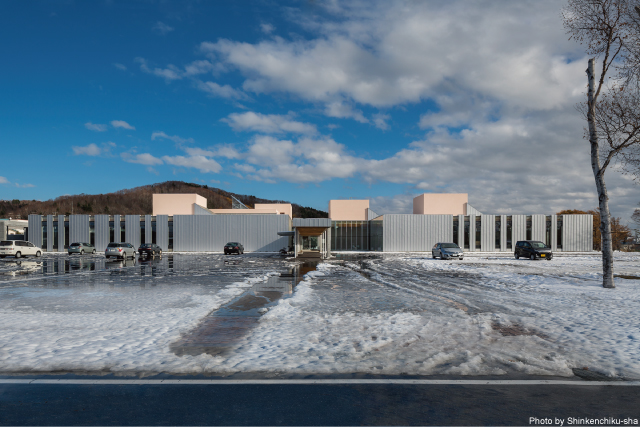
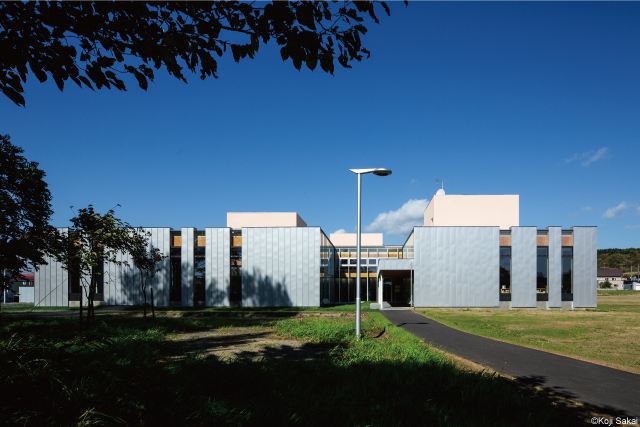
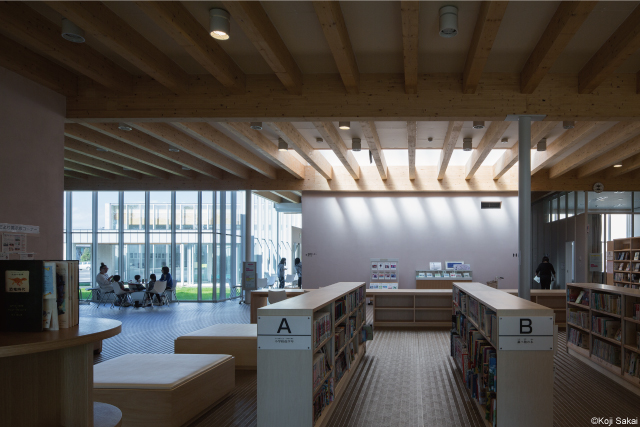
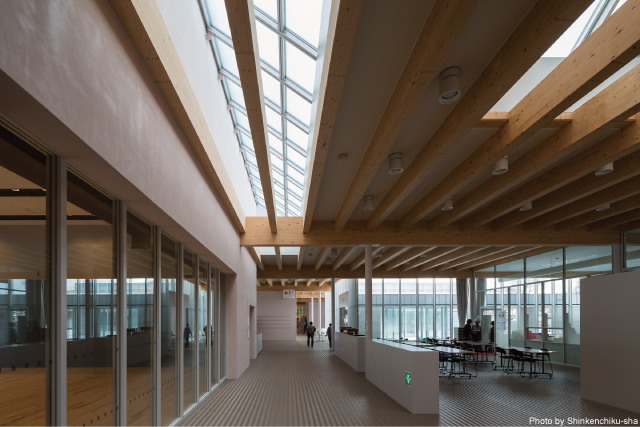
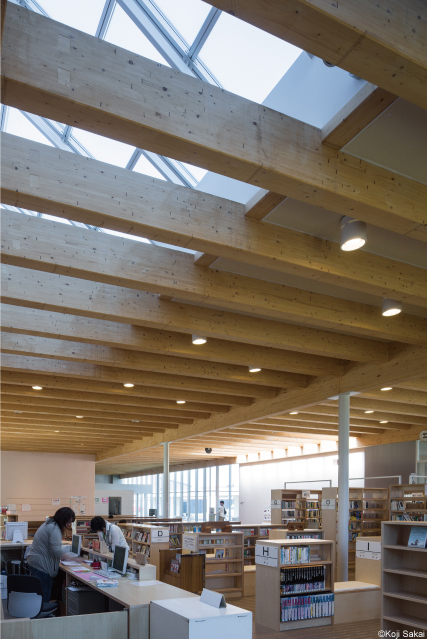
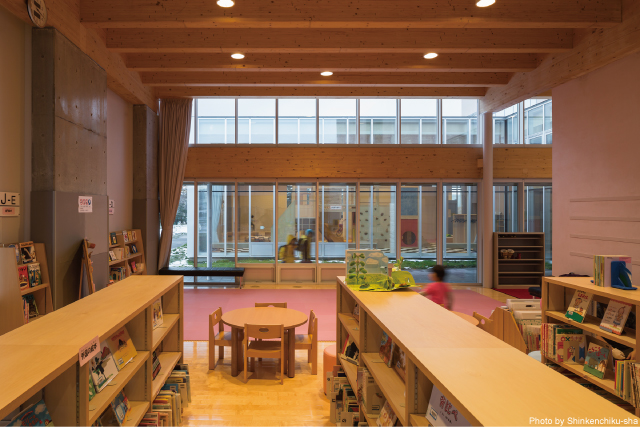
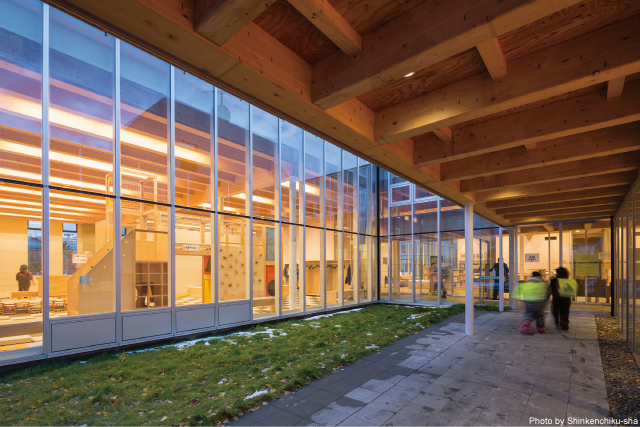
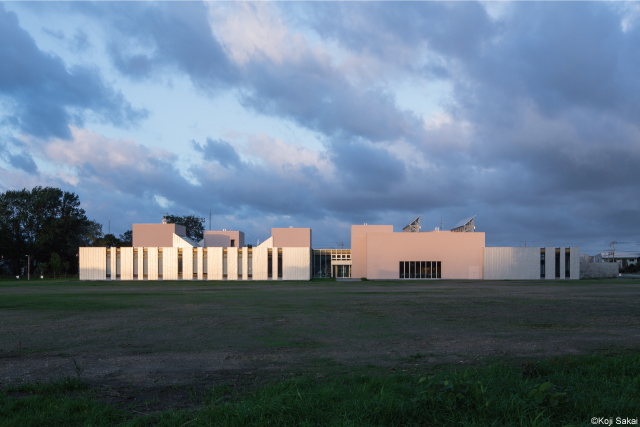
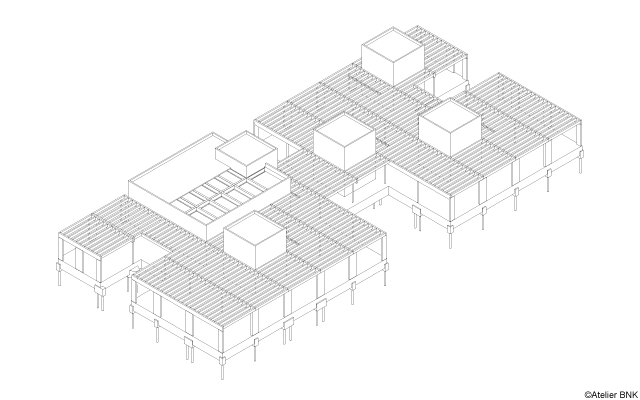
豊富定住支援センター
2013
北海道天塩郡豊富町
構 造:木造 + 鉄筋コンクリート造
階 数:地上1階
延床面積:2,630㎡
北海道大学瀬戸口研究室( 基本構想 )
金箱構造設計( 構造設計 )
アトリエブンク + アドエンジニアリング( 設備設計 )
辻井順( 外構設計 )
永田音響( 音響 )
北海道最北部の宗谷地方、豊富町市街地におけるコミュニティ施設である。近接する役場庁舎・保育園・病院の不足機能を補完しながら相互にネットワークをつくり、一体の施設群とする計画である。規模を小さく抑えつつ、図書機能や小さな多目的ホールを併設することで、様々な世代の町民の居場所づくりが目論まれた。
消費エネルギー全体を抑えるために、矩形の単純な平面形を基本として外壁面積を小さくするとともに、開口部はスリット窓として暖房負荷を抑えた。 4カ所のエントランス部分は、ウチニワと呼ばれる採光空間によって矩形平面を欠き取り、内側に引き込みながら自然光を導く場所とした。
内部空間は、地場産トドマツ集成材の架構による開放的な木造建築において、耐震要素となるコンクリートコアを木造モデュールに従って配列した。ウチニワとコンクリートコアを注意深く分散させることで、機能を緩やかに区切りながら必要なスケールや明るさを確保し、人びとの活動をレイアウトした。
素材は、可能な限り地元に馴染みのあるものを選択した。トドマツ集成材による架構、ナラ材の家具、コンクリート壁に塗られた赤みがかった珪藻土、これらはいずれもこの地域のものである。外壁メッキ鋼鈑の縦ハゼ葺きは、北海道の産業施設において広く使われてきた廉価で耐久性のある工法である。
公共建築協会公共建築賞優秀賞
北海道赤レンガ建築奨励賞
日本建築学会作品選集2017
JIA建築年鑑2016( 日本建築家協会優秀建築選100選 )
新建築2013年12月号
建築技術2013年5月号
第4版 コンパクト建築設計資料集成( 日本建築学会 編 )
ArchDaily
Archello
AECCAFE
Architecture & Culture ( 韓国 )
Toyotomi Community Center
2013
Toyotomi-cho, Hokkaido
Structure:W+RC
Floor:1 story
Floor Area:2,630㎡
Hokkaido University Setoguchi Laboratory( Basic Conception )
Kanebako Structural Engineers( Structural Design )
Atelier BNK+Ad Engineering( Mechanical & Electrical Engineering )
Jun Tsujii( Landscape Design )
Nagata Acoustics( Acoustic Planning )
This is a community facility in the Soya region of the town of Toyotomi in northernmost Hokkaido. The project supplements the shortcomings of the neighboring town hall, nursery school, and hospital, and creates a unified network of facilities. The aim was to create a place for citizens of all ages by adding a library facility and a small, multipurpose hall, while keeping the overall scale of the center small.
To curb overall energy consumption, the area of the outer walls was reduced on the basis of a simple, rectangular plan, and the heating load was reduced by using slit windows. In the four entrance areas, the rectangular plan is cut away to form a courtyard that guides natural light into the building.
Inside the expansive wooden building with its framework of locallyproduced laminated lumber of Sakhalin fir, concrete cores forming earthquake-resisting elements are arranged in conformity with wooden modules. Careful distribution of the courtyards and the concrete cores allow the various functions of the space to be loosely demarcated, while maintaining an appropriate scale and brightness.
Building materials common to the region were used wherever possible. The laminated lumber framework of Sakhalin fir, the Japanese oak furniture, the red-tinged diatomite coating on the concrete walls—all are local materials. The vertical standing seam method used in the galvanized steel sheeting on the outer walls is an inexpensive and durable construction method widely used in industrial facilities in Hokkaido.
Public Building Award, Excellence Prize
Hokkaido Red Brick Architecture Award
2017 Selected Architectural Designs of the Architectural Institute of Japan
Japan Architecture of the Year 2016 selected by the JIA
Shinkenchiku Dec. 2013
Kenchiku Gijutsu May. 2013
4th Edition Compact Architectural Design Data Corpus ( Edited by Architectural Institute of Japan )
ArchDaily
Archello
AECCAFE
Architecture & Culture( Korea )
